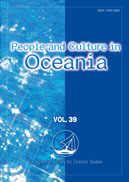Population-based monitoring and evaluation of physical activity is necessary in Papua New Guinea for better control of better management of metabolic disorders. Suitable physical activity measurement tools are limited for Papua New Guinea, with majority of population living in subsistence communities. Therefore, this study embarked on the development and validation of the physical activity questionnaire (i.e., PNG–PAQ). Development of the PNG–PAQ involved individual tracing of 46 healthy adult participants who wore accelerometers (Lifecorder; Suzuken Co. Ltd, Nagoya, Japan) for an average of 10 hours in two Papua New Guinea communities to identify their common activities. The validation of PNG–PAQ included 110 participants who wore accelerometers for seven consecutive days and completed the PNG–PAQ 7 day recall on Day 8. Results of average time (minutes/day) spent on sedentary and moderate-to-vigorous physical activities according to the PNG–PAQ and the accelerometer were examined to validate the questionnaire. A total of 44 activity classifications were derived from 14,554 activity descriptions, categorized under five domains (cash earning/schooling, subsistence farming/cash cropping, home chores, transport, and leisure) to develop the 26-question PNG–PAQ. Time spent on moderate-to-vigorous physical activity estimated by PNG–PAQ and by the accelerometer was well correlated with Spearman’s correlation coefficient of 0.5, whereas time spent on sedentary activities was only weakly correlated between PNG–PAQ and the accelerometer. PNG–PAQ may be a useful tool for monitoring moderate-to-vigorous physical activity levels among the residents in subsistence communities in highland and peri-urban communities in coastal Papua New Guinea.
View full abstract
